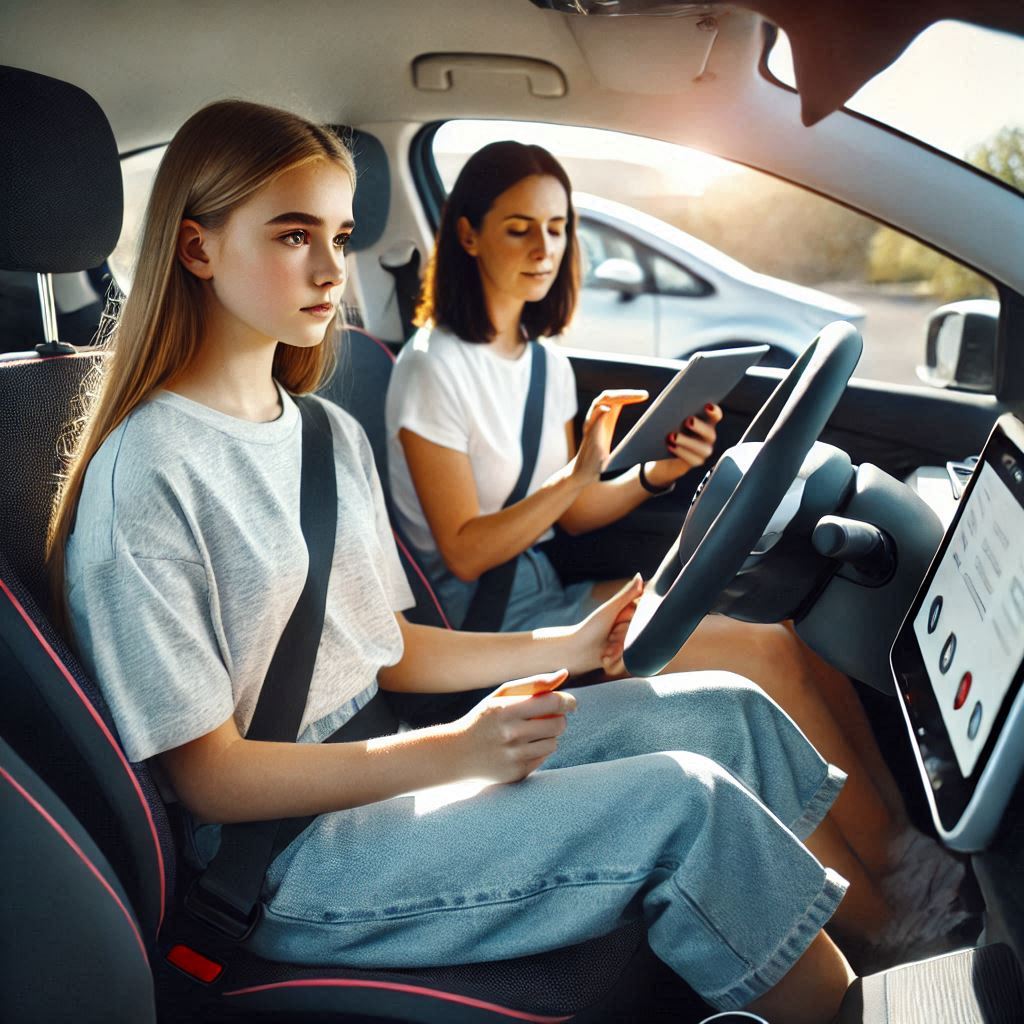Electric Driving Lessons Godalming
Your local Driving Instructor Godalming

Electric Driving Lessons Godalming
Learning to drive an electric car
differs from driving petrol or diesel vehicles in several ways, particularly regarding gear selection, acceleration, and new safety technologies. Here’s an overview of these differences and how to approach various driving situations like roundabouts, junctions, corners, and hills.
Learning to driving an electric car in Godalming
Electric Cars vs Petrol and Diesel Cars
Powertrain Differences
Electric Motors:
Electric cars use electric motors powered by batteries, which provide instant torque and smooth acceleration. Unlike petrol and diesel cars, which have traditional internal combustion engines with multiple gears, most electric vehicles (EVs) operate with a single-speed transmission that simplifies the driving experience.
Regenerative Braking:
Electric cars often feature regenerative braking systems that convert kinetic energy back into electrical energy, slowing the vehicle while recharging the battery.
Approaching Roundabouts and Junctions
When navigating roundabouts or junctions, electric and traditional cars handle gear selection differently:
Gear Selection
Electric Cars:
Since many electric vehicles use a single-speed transmission, they don’t manually switch gears. Instead, acceleration and deceleration are managed through the electric motor’s responsiveness, ensuring a smooth transition as you approach a roundabout or junction.
Petrol/Diesel Cars:
These vehicles will automatically shift gears in automatic models or require manual gear changes in manual transmissions. The driver must change to the appropriate gear for smooth acceleration when exiting the junction.
Slowing Down and Engine Braking on Hills and Corners
Electric Cars
Regenerative Braking:
Electric cars use regenerative braking to aid in slowing down. When approaching a corner or going downhill, lifting off the accelerator engages the regenerative braking system, which helps slow the car and recharges the battery.
Smooth Experience:
The absence of traditional gear changes results in a seamless driving experience, allowing you to focus more on steering and positioning.
Petrol/Diesel Cars
Manual Engine Braking:
In petrol and diesel vehicles, you may use engine braking by changing to a lower gear when slowing down for corners or descending hills. Proper gear selection helps maintain control while reducing reliance on the brakes.
New Safety Features in Electric Cars
Electric vehicles often come equipped with advanced safety technologies as standard features. Some common safety features found in many electric cars include:
Advanced Driver Assistance Systems (ADAS)
Features like adaptive cruise control, automatic emergency braking, lane-keeping assist, and blind-spot monitoring help enhance safety and ease anxiety while driving.
Enhanced Stability Control:
Electric cars, with their low center of gravity due to battery placement, often offer better handling and stability, contributing to safer driving dynamics.
Collision Avoidance Technologies:
Many electric cars incorporate cameras and sensors that enhance awareness of surroundings, helping to detect obstacles and pedestrians, further increasing road safety.
Conclusion
Driving an electric car provides a unique experience compared to traditional petrol or diesel vehicles. With simplifications in gear selection and strong regenerative braking systems, EVs offer smooth acceleration and deceleration, especially when approaching roundabouts, junctions, and navigating hills and corners. The differences between manual and automatic cars are also notable, with electric vehicles generally leaning towards automatic systems. Coupled with advanced safety features, electric cars represent a modern and secure choice for drivers. Your Godalming electric driving lesson instructor will help you master all the above preparing you to reach test standard ready to take the automatic practical driving test.

Ready to pass in an electric car!
Book your electric driving lessons in Godalming now.
Useful Links to help you on your driving journey.
Click here for more info
Areas we cover for Electric Driving Lessons in Godalming
Godalming, Farncombe, Busbridge, Peasmarsh, Compton, Shalford, Cateshall, Charterhouse School, Hurtmore, Eashing, Shackleford, Peper Harrow, Milford, Enton, Bramley, Hascombe
Additional Lessons and Courses for Electric Cars
Refresher Lessons
-
Boost your confidence behind the wheel with our tailored refresher driving lessons. Book now for safer roads ahead!
Intensive Courses
-
Intensive driving courses are designed to help learners pass their practical driving test faster compared to traditional weekly lessons.
Pass Plus Course
-
Pass Plus courses are designed to help newly qualified drivers gain experience and skills beyond what is covered in the standard driving test.
Independent Driving Instructor Programme
